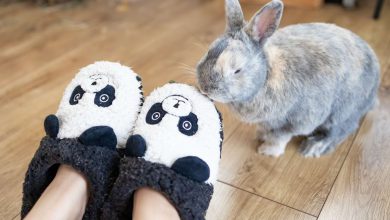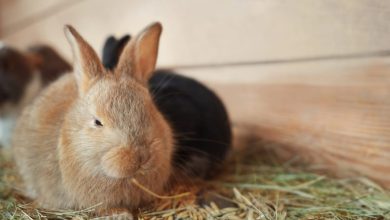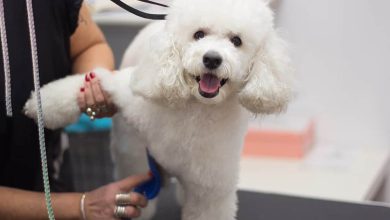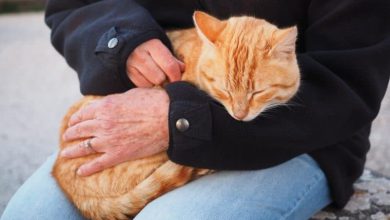Do All Cats Have a Primordial Pouch? The Fascinating Answer

There’s something about a cat’s belly that just makes you want to reach out and pet it. Maybe it’s because they’re always so warm, or maybe it’s because they look so soft and inviting. Whatever the reason, there’s no denying that there’s something special about your cat’s fuzzy belly. Of course, not all cats are equally fond of having their bellies rubbed. Some cats love it, while others tolerate it. When a cat shows you its tummy, it’s a sign of trust, submission, and affection because your cat’s abdominal region is one of the most vulnerable parts of their body.
Whether your cat lets you stroke their tummy or not, you may have noticed your furry friend has a loose flap on their abdomen. Don’t worry: although obesity is a real problem for domestic cats, not all felines with sagging stomachs are overweight. This phenomenon may have a simpler explanation because all cats—even wild ones—have protective layers made up of fat, skin, and fur that hang down around their midsections.
The scientific term for this structure is “primordial pouch” although it can also be referred to as a stomach pad or famine pouch. Whatever you call it, cat fans are fascinated! One viral TikTok post on this subject has over 500,000 views. In this article, you will learn everything you need to know about these baggy folds in cats.
When Does the Primordial Pouch Begin to Develop?
Primordial pouches usually begin to appear as kittens mature into cats. This tummy bulge becomes more noticeable after your kitten reaches 6 months of age. Both male and female kittens are born with primordial pouches. It is normal for cats to develop primordial pouches as they age, and it is nothing to worry about since all cats—even lions and tigers—have primordial pouches, and having one doesn’t hinder your kitty in any way. As your cat matures, many of them develop a more pronounced flap that hangs from their chests and extends to between their hind legs.

The Primordial Pouch in Cats: Why Does It Exist?
It’s not totally clear why cats have primordial pouches and why their sizes vary quite a bit. While the jury is still out on exactly why this fleshy protrusion exists, some theories suggest it might serve a purpose. Here are the top three most popular theories as to what these pouches are for.
Providing Protection for Their Organs
One theory is that the primordial pouch provides protection for a cat’s internal organs in the event of a fight. Cats are known to be fierce fighters, and they often take nasty blows to the stomach during altercations. The primordial pouch might act as a sort of “shock absorber” for vital organs, cushioning them from impact and preventing serious injury.
Agility
Cats are nimble creatures, able to twist and turn their bodies with ease. This agility might be thanks in part to the primordial pouch. This loose skin flap, located on the lower belly of cats, allows them to twist and jump with great flexibility. This gives them the freedom to stretch and flex into an incredible variety of positions, making them cunning and resourceful predators.
Food Storage
In the wild, cats often don’t know when their next meal will occur, so primordial pouches are believed to help a cat absorb and store more food. Their abdomen is able to expand and contain more food since it’s made up of a more flexible piece of skin. This storage capacity could be useful during times of famine when a feline might need to be able to survive on stored energy reserves. You might consider helping your cat lose some weight if the pouch starts to fill out because overweight cats often store fat here.
Which Cat Breeds Have Large Primordial Pouches?
This belly flap may be noticeable or discrete depending on the breed, size, and genetic makeup of your cat. Since there is no fur to cover the pouch on the sleek Sphynx, it is more apparent than on the Maine Coon, for instance. Many people love the look of primordial pouches and think they add to their cat’s unique appearance. If this is you, and you’re looking for a cat with a greater chance of having a large primordial pouch, you have a few breeds for you to choose from!
Cat fancier’s associations that standardize and register breeds celebrate certain cats for their low-hanging bellies. For example, the prominent pouches of Pixiebobs are listed by The International Cat Association as a desirable breed feature. Additionally, the Bengal, Egyptian Mau, Siberian, Ragdoll, and Japanese Bobtail are all breeds that tend to have noticeable to larger than average primordial pouches.
Other Common Causes of Abdominal Enlargement in Cats
There are many potential causes of abdominal enlargement in cats, and it can be difficult to determine the exact cause without testing. Many of these conditions can be serious or even life-threatening, so it is important to take your cat to the vet for testing if you notice any signs of abdominal enlargement. A physical examination by a veterinarian is the best way to determine the cause. Other potential causes include:
- Intestinal parasites: Having a lot of worms in their intestine can give your cat a potbellied look. Kittens are more likely to have worms than older cats. In most cases, the problem can easily be resolved with the help of deworming medication.
- Obesity: Cats gain weight when they eat too much or do not exercise enough. It is estimated that one-third of domestic cats are obese, with over a quarter being overweight. An obese cat may develop abdominal enlargement due to fat accumulation in the abdomen. Obesity can also be a symptom of hormonal imbalance in cats.
- Pregnancy: During pregnancy, female cats show a pronounced abdominal enlargement. Cats that roam freely can become pregnant without their owners realizing it. Spaying your cat at a young age is the easiest way to prevent pregnancy.
- Cancer: Cancer is a common cause of abdominal enlargement in cats. Many types of cancer can cause stomach swelling, so it is important to have your cat examined by a veterinarian if you notice any changes in their belly region.
- Kidney or heart disease: Cats suffering from kidney or heart disease often have enlarged abdomens due to fluid accumulation.
Final Thoughts
In conclusion, yes, all cats have a primordial pouch. This is a small flap on the lower abdomen that may be more or less visible on some breeds of cats and some individual cats. Theories suggest that this pouch helps to protect, nourish, and allow cats flexibility of movement. Whatever the reason, primordial pouches are normal and nothing to be concerned about. So, enjoy watching your cat walk with that flappy belly swaying proudly!
Featured Image Courtesy: Shutterstock



